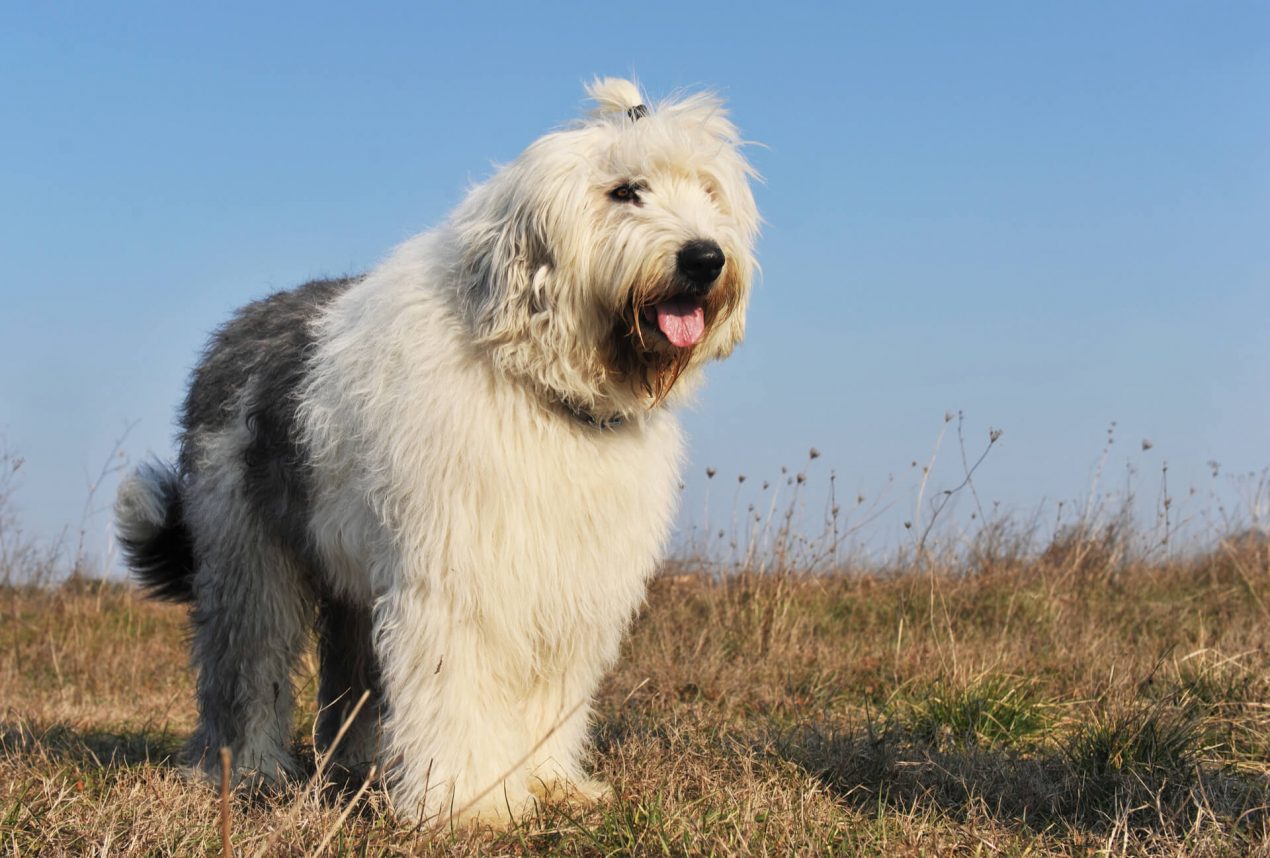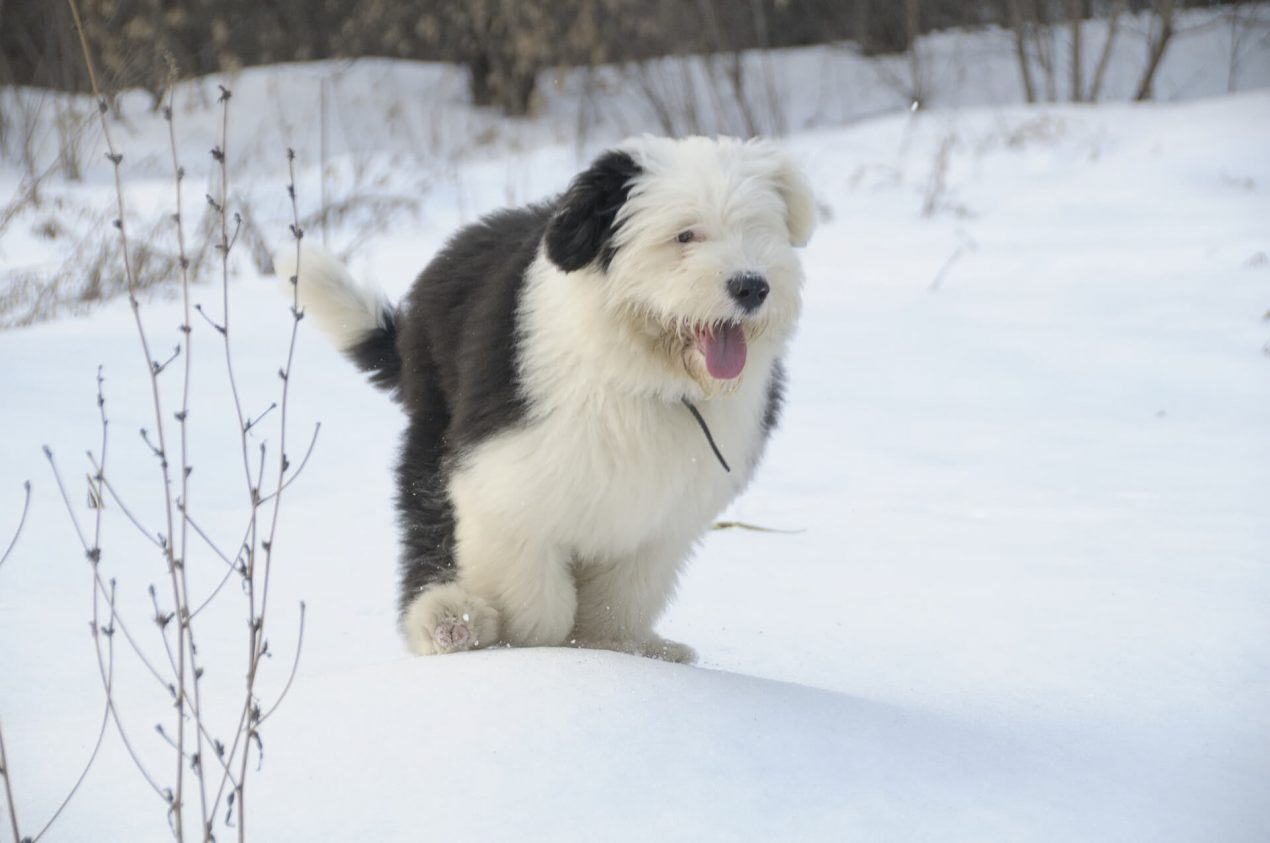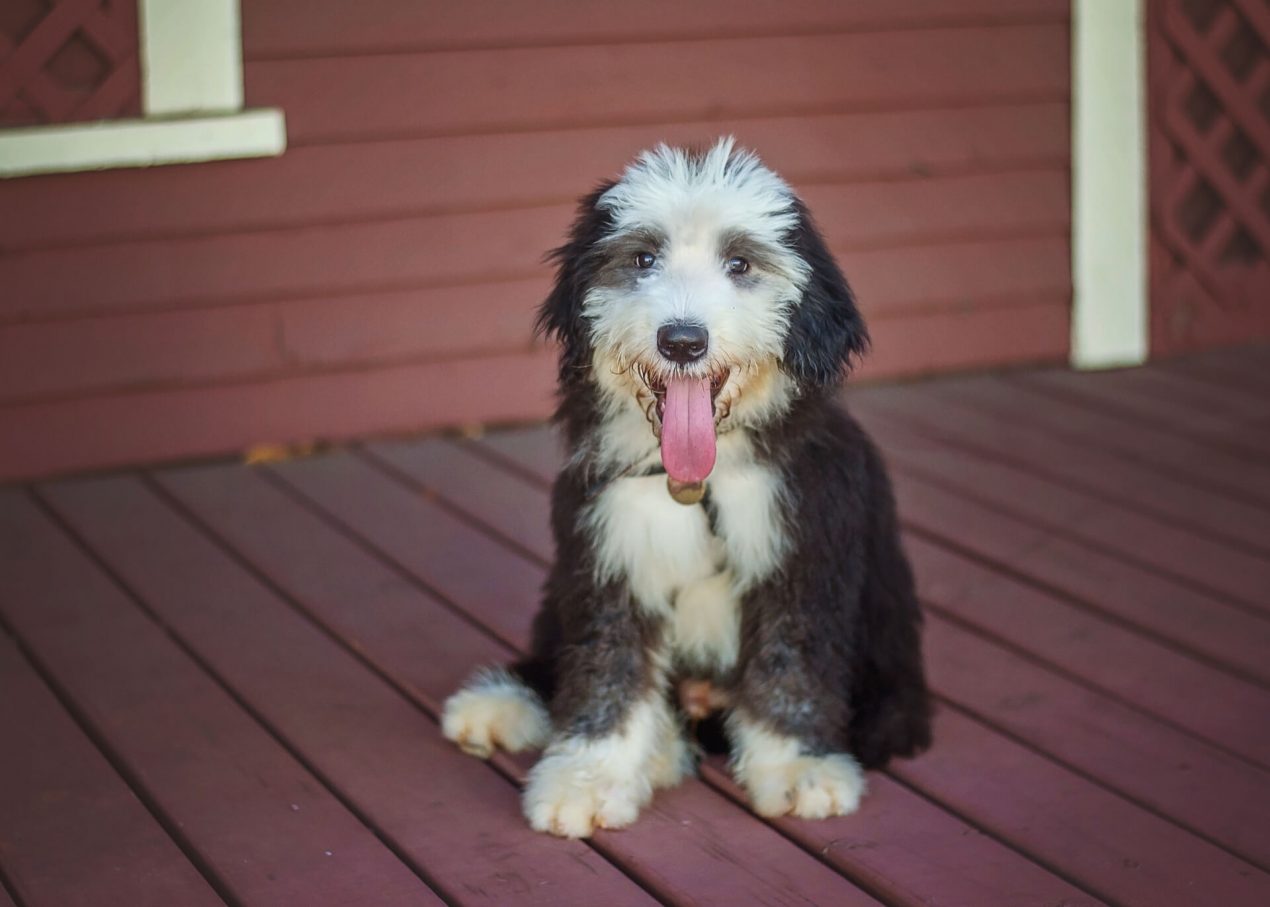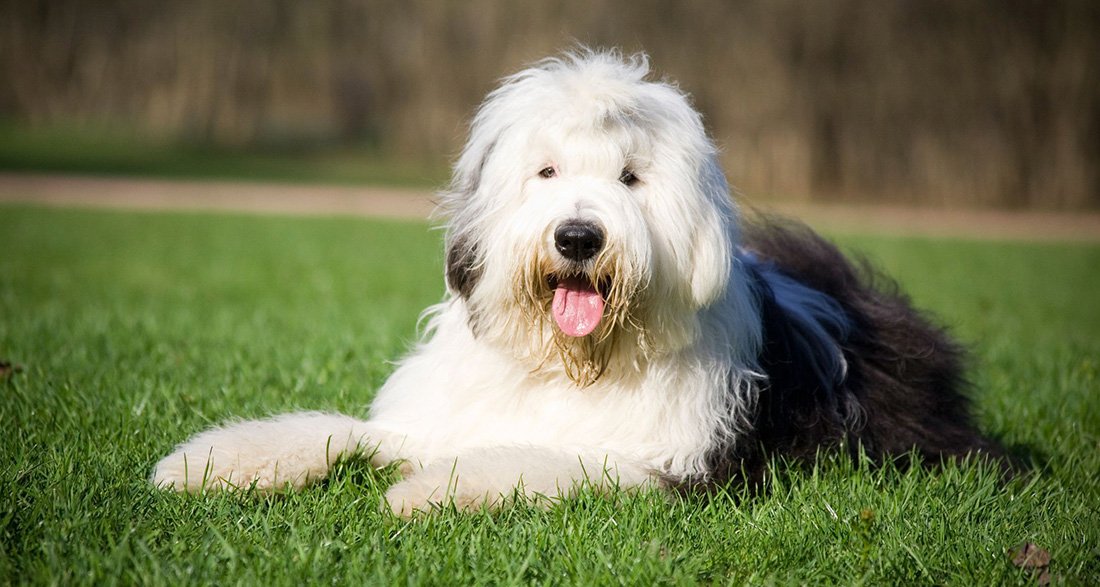The plush fur, the loving gaze, and the cheerful demeanor make the Old English Sheepdog, better known as the Bobtail, truly unmistakable. Learn more about this British shepherd dog in the profile below.
History of the Old English Sheepdog
The Old English Sheepdog is considered one of the oldest dog breeds in Britain. English shepherds used these dogs for herding cattle at an early stage. The ancestors of the Old English Sheepdogs include English and European shepherd dogs as well as Russian and Hungarian herding dogs. The characteristic dense and long coat served as protection against harsh weather conditions.
In 1888, the British Kennel Club officially recognized the Old English Sheepdog. The name “Bobtail” derives from the short tail that is naturally occurring in some dogs of this breed. Because of its magnificent coat, the breed became increasingly popular as a show dog since the early 20th century. Finally, in 1963, it received international recognition by the FCI. The breed belongs to Group 1 “Herding Dogs and Cattle Dogs” in Section 1 “Sheepdogs.”
Breed Overview
GROUP: Herding
HEIGHT: 22 inches and up (males); 21 inches and up (females)
WEIGHT: 60 to 100 pounds
COAT: Double coat
COAT COLOR: Commonly white with gray markings and dogs may also show grizzle, merle, and any shade of blue coloring
LIFE SPAN: 10 to 12 years
TEMPERAMENT: Intelligent, playful, sociable, bubbly, loving, adaptable
HYPOALLERGENIC: No
ORIGIN: England
Traits and Characteristics
As fluffy and affectionate as the Bobtail looks, it is indeed under all that thick fur. The loyal and well-balanced companion is a wonderful family dog. It remains playful well into old age and loves children. The breed is also regarded as intelligent and reliable protector, reliably alerting to any intruders. Occasionally, the English shepherd dog can be stubborn. However, with gentle persuasion, you can easily manage this. Like many shepherd dogs, English herding dogs are sensitive and do not respond well to punishment. They are friendly and open to other dogs and, with proper socialization, get along with other pets.
| Affection Level | High |
| Friendliness | High |
| Kid-Friendly | High |
| Pet-Friendly | Medium |
| Exercise Needs | Medium |
| Playfulness | High |
| Energy Level | Medium |
| Trainability | Medium |
| Intelligence | High |
| Tendency to Bark | Medium |
| Amount of Shedding | High |
Appearance of the Old English Sheepdog
The Old English Sheepdog is a large dog, primarily known for its abundant coat. Its body is robust and muscular with a square-looking head. Its eyes are widely set apart and are preferably dark, but can also be blue or odd-eyed. The lush coat of the Bobtail is weather-resistant and covers the entire body. The shaggy topcoat has a coarse texture, while the undercoat is very dense and water-repellent.
The hair is denser on the hind legs than on the rest of the body. Coat colors range from gray to grizzle to blue in various shades. The head, neck, and front legs should be white, and white “socks” are allowed. The tail is well feathered and was often docked in the past.

Puppy Training
The Bobtail is inherently friendly and cooperative, but it is not a breed for beginners. As a former shepherd dog, it brings a strong herding instinct and a slight inclination towards independence. Given its eventual size, it’s crucial to show the puppy what is allowed and what is not from an early age. Train your dog with a lot of sensitivity and consistency. Punishment and aggression are not effective with these sensitive creatures. Since the dogs seem unaware of their own strength and size, they tend to jump up on beloved individuals. This joyful exuberance may not be understood by everyone and must therefore be brought under control early on.
Activities with the Old English Sheepdog
Despite its appearance, the Bobtail is an energetic dog that requires plenty of exercise. It feels most comfortable in nature and enjoys running and playing. These dogs are enduring and relish long walks in nature in any weather. To be fully engaged, the clever dog needs activities that challenge its intelligence. Therefore, they are enthusiastic athletes in activities like Dog Dancing or Agility. Additionally, every member of the breed retains its former herding instincts, so it tends to keep the entire family together. Unlike other active herding dogs such as the Australian Shepherd or the Border Collie, you don’t necessarily have to provide them with job-like activities.

Health and Care
The dense coat of the breed requires considerable grooming. You should thoroughly comb the plush fur of the Bobtail at least two to three times a week to prevent matting. Therefore, it’s crucial to accustom the puppy to the grooming routine early with a brush or, if necessary, with an electric clipper. Furthermore, it’s essential to remove dirt and pests from the coat after each walk. You should clip or tie up the long hair around the face to ensure clear vision for the dog. With their thick fur, these dogs can easily overheat in hot temperatures. Thus, a trim is advisable during the peak of summer.
Is the Old English Sheepdog Right for Me?
The Bobtail is an affectionate and loyal dog that prefers spending the entire day with its family. Therefore, you should have enough time and willingness to constantly care for the dear four-legged companion. Consider the extensive grooming requirements before getting a puppy. You must be willing to dedicate a significant portion of your free time to engage with the new four-legged family member. The breed is best suited for an active family ready to commit to the dog for the next 12 to 13 years. With proper training, you’ll have a loyal and amusing companion who loves its family above all else.

Anyone interested in a Bobtail puppy should visit an Old English Sheepdog breeder in the area. Ideally, the breeder should be affiliated with the Club for British Herding Dogs. Also, ensure that the breeder does not breed for championships or solely for appearance. You can expect to pay around $1200 for a purebred puppy. If you prefer not to spend as much, avoid falling for cheap offers online. These breeders often neglect the welfare of the animals and are solely motivated by money. Instead, consider visiting a shelter and giving a poor Bobtail or mix in need a chance.
Interesting Facts
In England, during the 18th century, dog tax was calculated based on the length of the tail, making the short-tailed Bobtail particularly popular at that time. Today, these dogs are very popular on social media due to their clumsy nature and plush appearance.
Do you have a Bobtail or are you considering getting one? Share with us in the comments what makes them special in your opinion!


